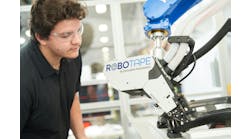Joe Feeley is editor in chief for Control Design and Industrial Networking. Email him at [email protected] or check out his Google+ profile.
You controlled your machines on PCs running NT, did you? Well, there might be a PC based on CNT before long.
Stanford University recently announced that a team of its engineers built a basic computer using carbon nanotubes (CNTs), a semiconductor material that has the potential to launch a new generation of electronic devices that run faster and use less energy than those made from today's silicon chips. The achievement is reported in the Sept. 25th issue of Nature.
SEE ALSO: Stress Relief: The Science of the Slingshot
It was roughly 15 years ago that carbon nanotubes were first fashioned into transistors, the on-off switches at the heart of digital electronic systems. But what Stanford scientists term "a bedeviling array of imperfections in these carbon nanotubes has long frustrated efforts to build complex circuits using CNTs."
So, why should we care about a successor to silicon? For decades, progress in electronics meant shrinking the size of each transistor to increase the transistor density on a chip. As transistors become tinier, they waste more power and generate more heat.
Stanford says many researchers believe that this power-wasting phenomenon could spell the end of Moore's Law, which predicted in 1965 that the density of transistors would double roughly every two years, leading to smaller, faster and, as it turned out, cheaper electronics. You can learn more about the process at Stanford University's site via www.ControlDesign.com/Stanford.
Yet another exciting piece of research news: You might soon own your very own light saber, and not have to journey to a galaxy far, far away to get it.
Working with colleagues at the Harvard-MIT Center for Ultracold Atoms, a group led by Harvard physics professor Mikhail Lukin and MIT physics professor Vladan Vuletic managed to coax photons into binding together to form molecules — a state of matter that, until recently, had been purely theoretical, Harvard University reported recently. The work also is described in Nature.
SEE ALSO: About Time, If You Ask Me...
Photons have long been described as massless particles that don't interact with each other. Shine two laser beams at each other, Lukin explained, and they simply pass through one another.
"What we have done is create a special type of medium in which photons interact with each other so strongly that they begin to act as though they have mass, and they bind together to form molecules. This type of photonic bound state has been discussed theoretically for quite a while, but until now it hadn't been observed."
"It's not an inapt analogy to compare this to light sabers," Lukin adds. "When these photons interact with each other, they're pushing against and deflect each other. The physics of what's happening in these molecules is similar to what we see in the movies."
More details on this can be found via www.ControlDesign.com/Photons.




